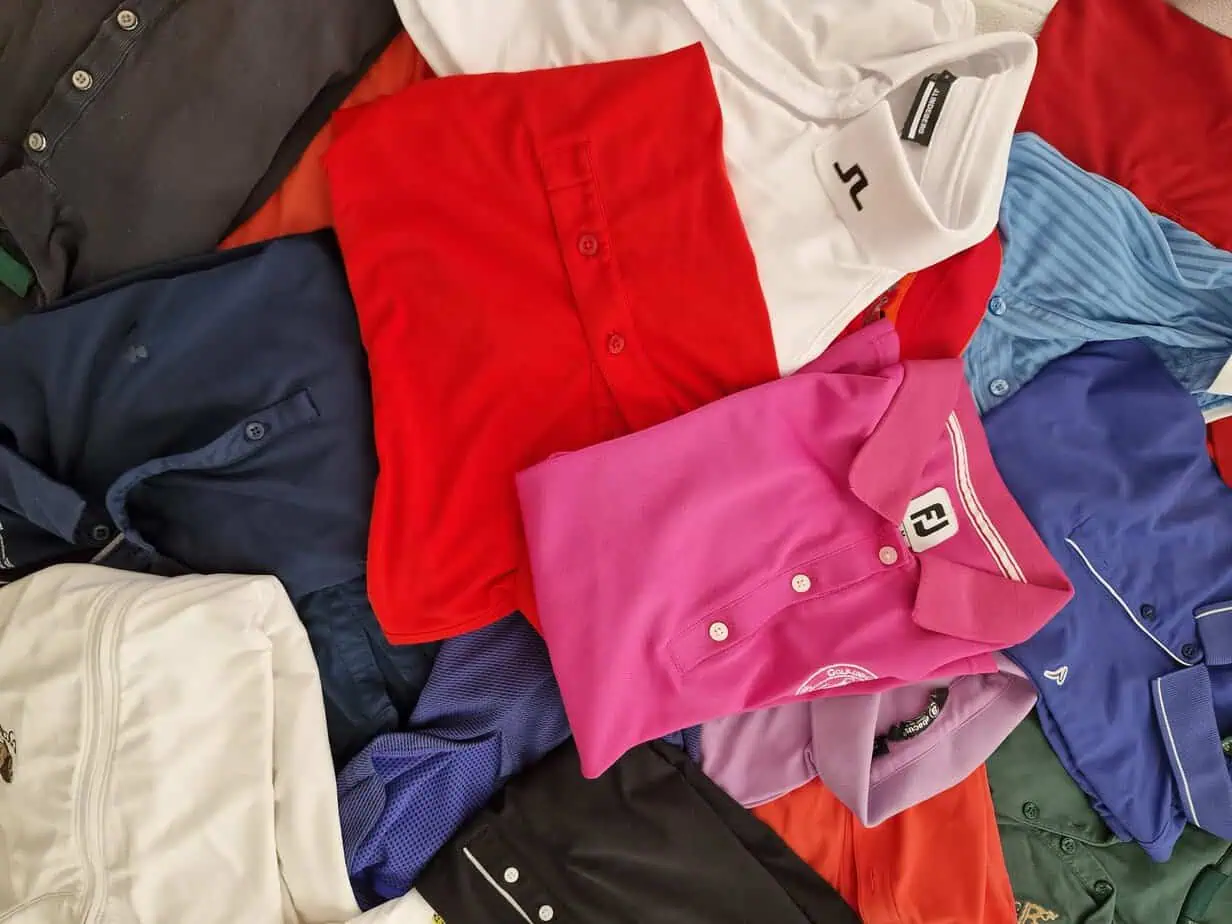Circular economy: when the pile of golf shirts continues to grow
The outlook is supposedly rosy: according to a report by market research company Fact.MR on the development of the golf apparel market, it will grow from 2023 billion US dollars to 5.4 billion US dollars by the end of 2033. The USA, Germany and Japan have been identified as key markets.
More golf shirts than rounds of golf
When it comes to golf fashion, a look in your own closet reveals 33 golf shirts alone, nicely sorted by color and lined up in four piles. For Joanna Czutkowna, CEO of 5Thread and an expert in sustainability in the fashion sector, this raises a question. “Do we hold on to the idea of overconsumption?”. Or, she asks, are we changing our relationship to clothing, emphasizing factors such as longevity, durability and repair options? In the end, it’s also about this for her: “Clothes are often given away in sport, so they don’t have any value.” Sportswear, like other clothing, is becoming fast fashion. According to estimates by the European Environment Agency, the fashion industry accounts for around ten percent of global CO2 emissions. In the EU, fashion caused around 270 kilograms of CO2 emissions per person in 2020. In addition, the overproduction of fashion items leads to huge fashion waste dumps in developing countries.
Golf shirts are the ultimate piece of clothing in golf. The logo shirt at the resort or at a well-known international golf club is the standard purchase. The merchandising halls at the Ryder Cup, the Open and the Masters are full of shirts in all shapes and sizes. The demand for products that are labeled as “sustainably produced” is growing. At this point, Czutkowna points out that “there is no such thing as the most sustainable sports shirt” because sustainability factors can vary greatly. This may involve starting with materials, production methods, shortening delivery routes or packaging materials, for example. The possibilities are many.
Low price and overproduction
“The most sustainable T-shirt is the one we don’t buy,” explains Czutkowna, referring to the aspect of the circular economy, which has hardly been relevant in sport to date. Which brings us back to the golf shirt and the topic of golf teams. An example is an average golf club with ten youth teams and six players each, each of whom receives a golf shirt and a sweater with the club logo every year. The result is 60 shirts and 60 sweaters for this basic outfit alone. For men’s or women’s teams, ambitious clubs, college or select teams, seasonal outfits of up to 50 items per person, from head covers for the clubs to socks, are not uncommon.
.
“Sports clubs usually work directly with a manufacturer, and low prices often play an important role,” explains Czutkowna. And: orders are usually placed in the fall before the season. “Then the clubs don’t know the exact number of players they have and what sizes they need. So overproduction is a problem.” While in a normal golf club the adults can wear the clothing for several years, there is also the issue of growth in the youth teams. As a rule, the shirts only fit children for one year. But which golf club collects garments to give them to children or young people next year – if they are still good enough – who will then have the right size? “It would actually be easy to set up swap shops here,” the fashion specialist points out.
Why does the circular economy system at the golf club fail?
- On the one hand, the sales targets of the pro store operator, with whom a club often cooperates in the purchase of clothing. The latter has an interest in selling new parts, which contradicts to the circular economy principle.
- However, this is also often due to the low value of the garments. When a national team or college player gets clothing, the individual player just takes what’s in the box. Even if he perhaps already has the two belts from last year or will never wear sweaters in his life. The parts then languish in the cupboard. The clothing sponsor paid for them. So what’s the point?
- As long as it’s new, that’s often the motto. In other words, a 15-euro sweater may be worth more to a team member than a high-quality multifunctional product that has been worn ten times and has a retail price of 150 euros or dollars. At the moment, durability and quality are not yet characteristics that increase the attractiveness.
“Clothing plays an enormous role in sport,” Czutkowna has realized in recent years. While fast fashion and other negative effects of developments in the fashion sector are now the subject of intense global debate, the sports sector is still in its infancy. Puma recently announced that shirts for soccer clubs will in future be made from 75 percent old football shirts, with the remaining 25 percent coming from recycled ocean plastic. The RE:Jersey project shows that there are solutions.
How often is sportswear used? When is it actually so worn that it can no longer be used? How often is it actually necessary to buy new sportswear? These are all questions that athletes will have to ask themselves more often in future if they attach importance to sustainability.
I look at all the golf shirts in my cupboard. 33 pieces await the summer. It is quite possible that one or the other will not be used at all.







